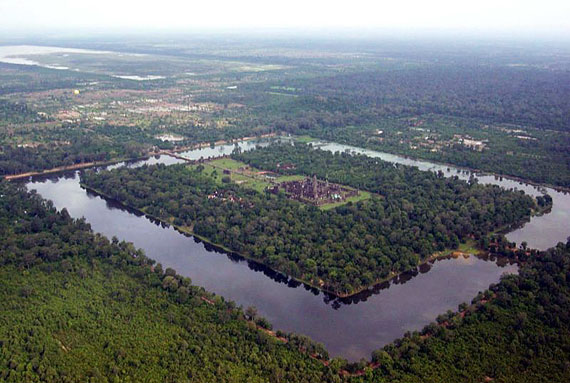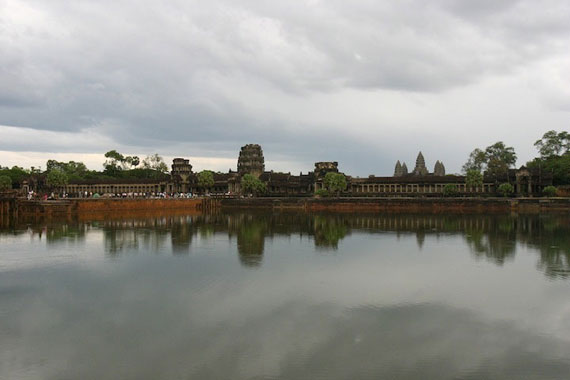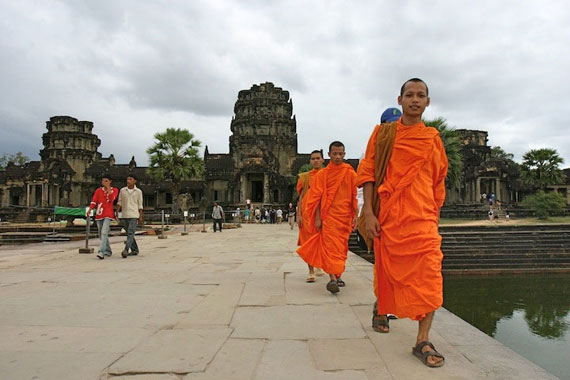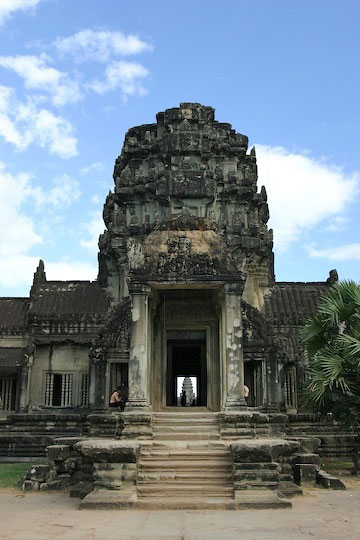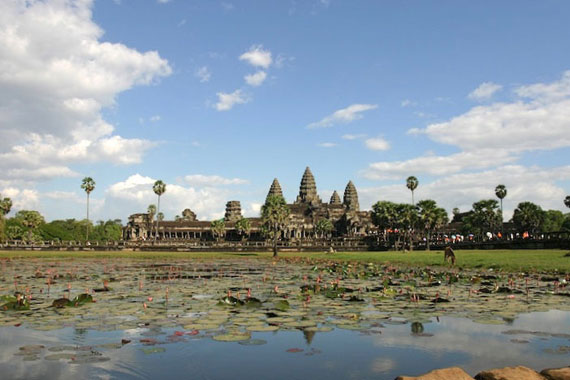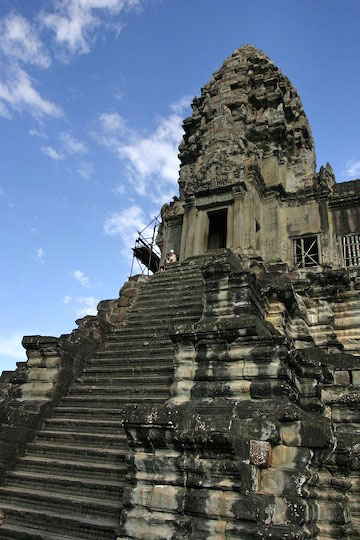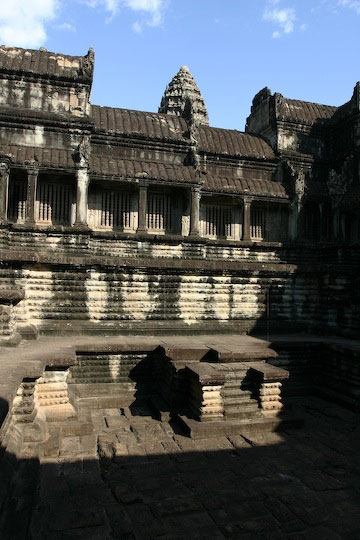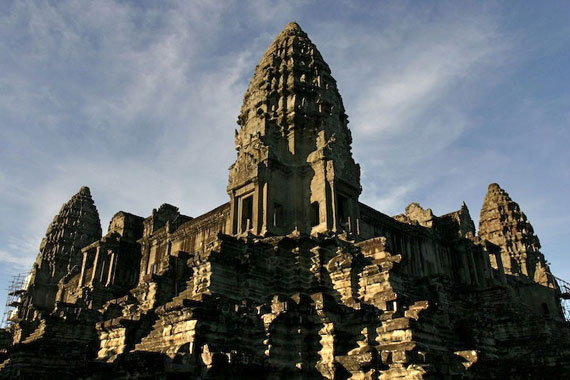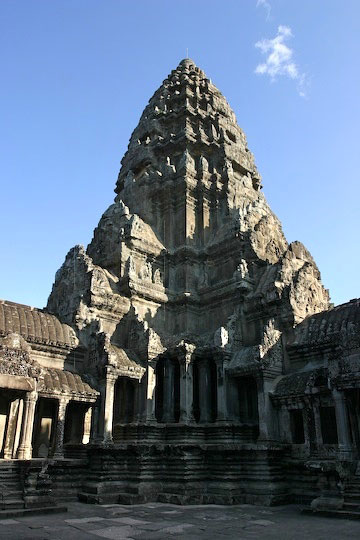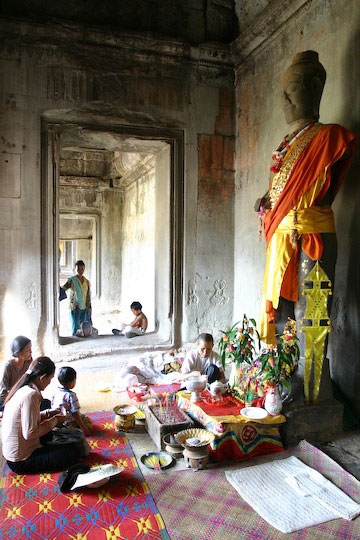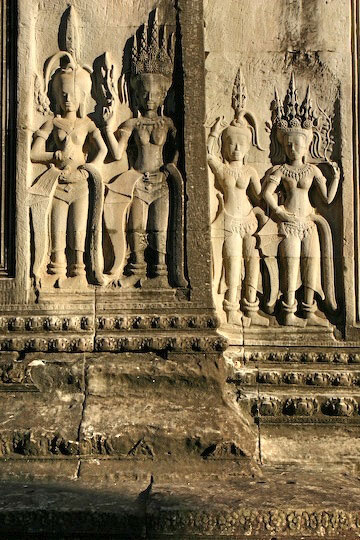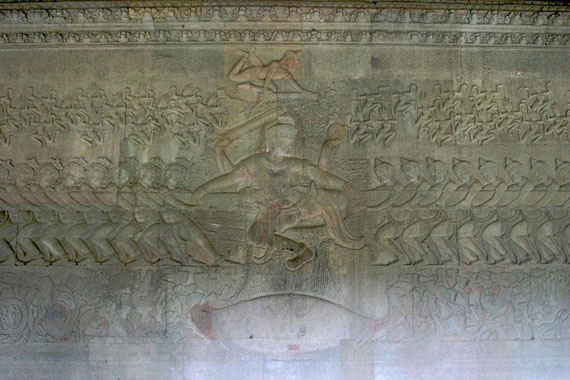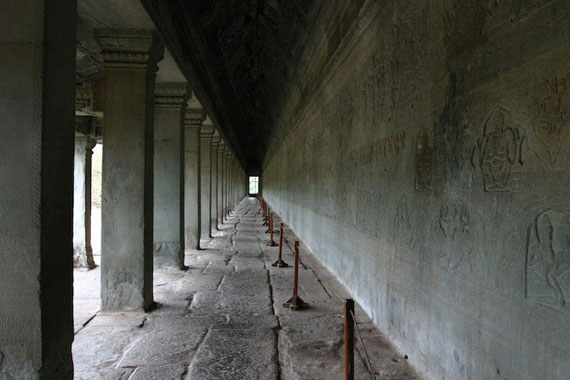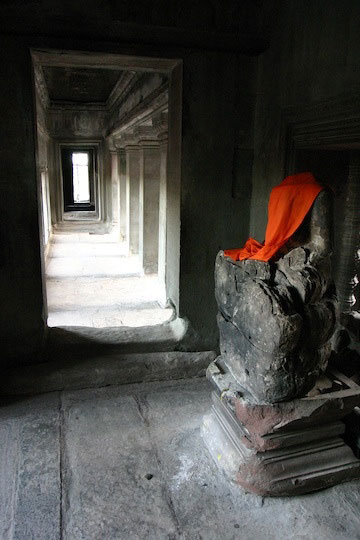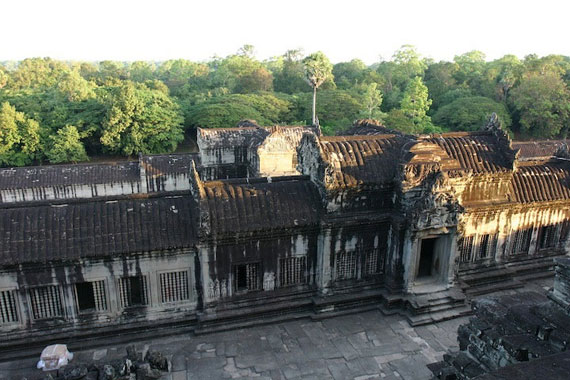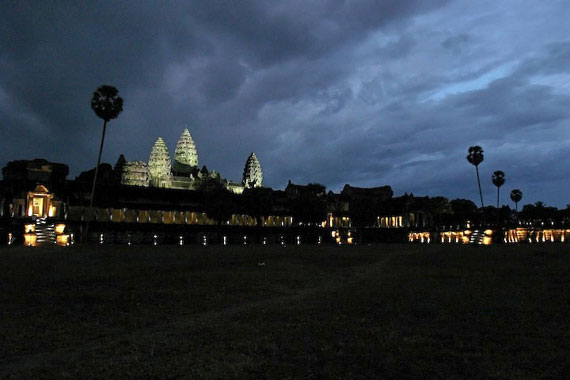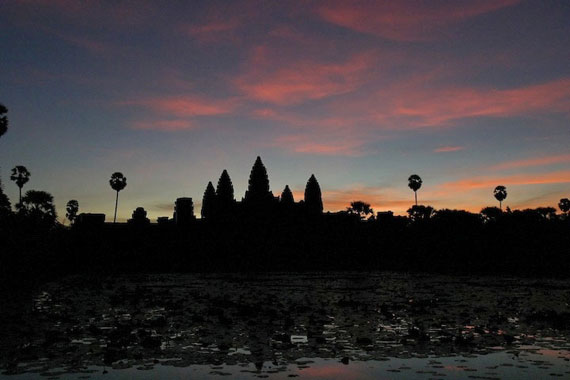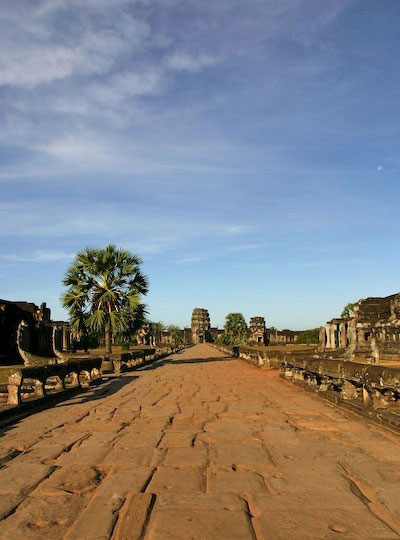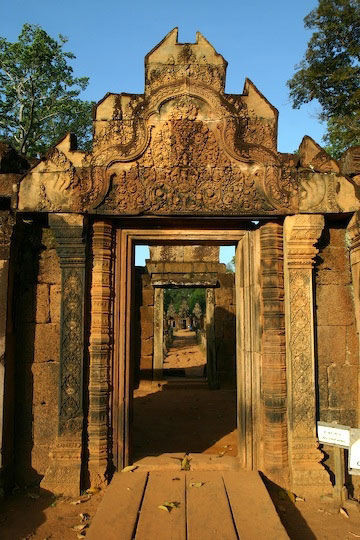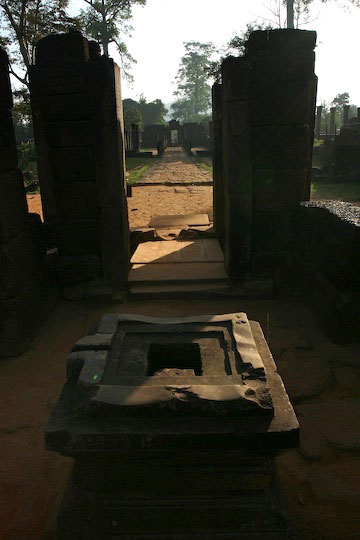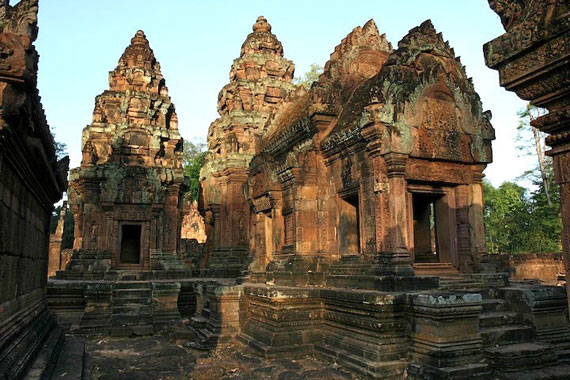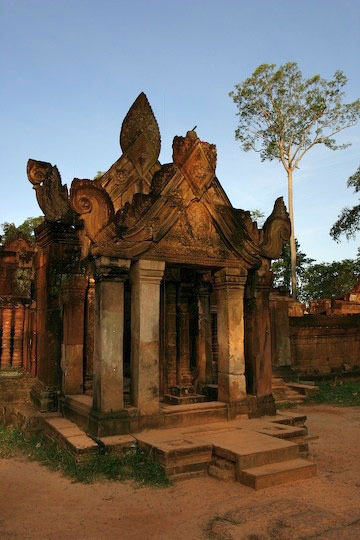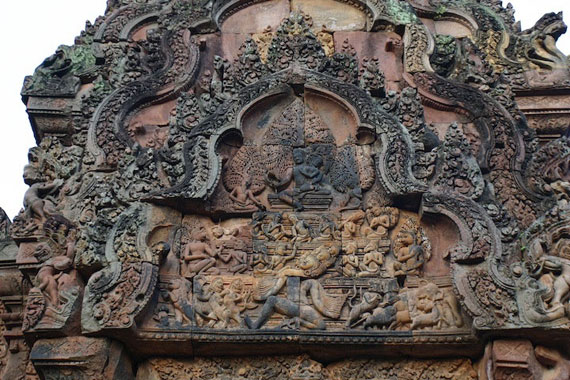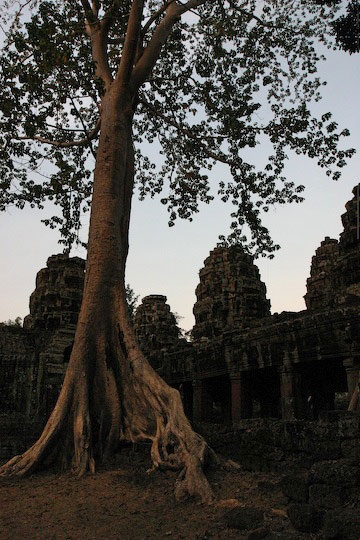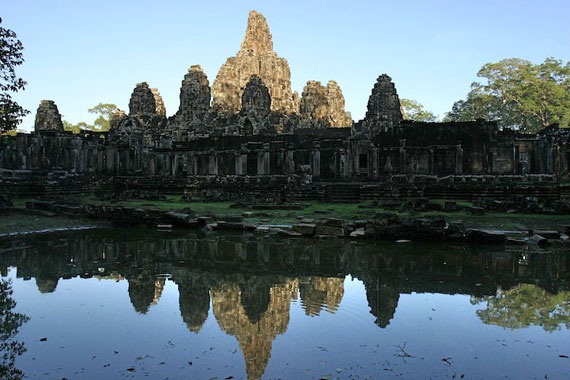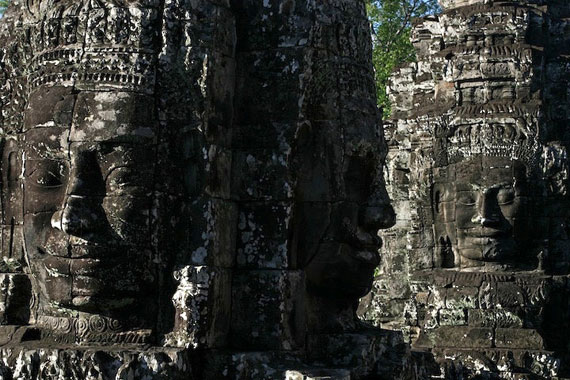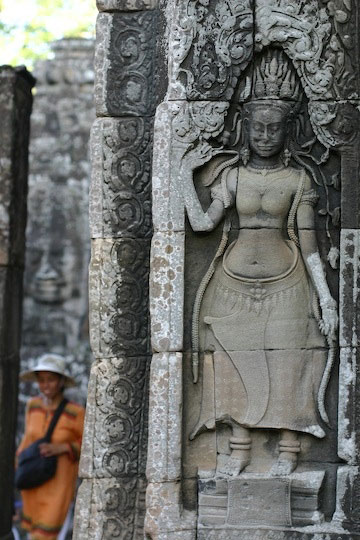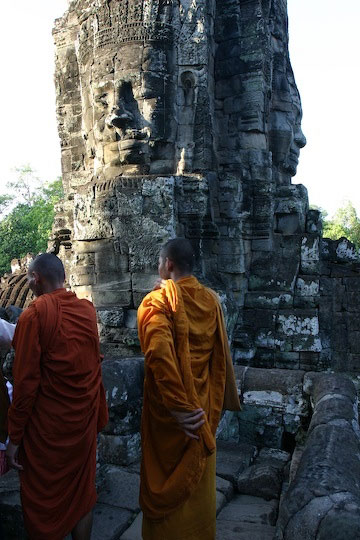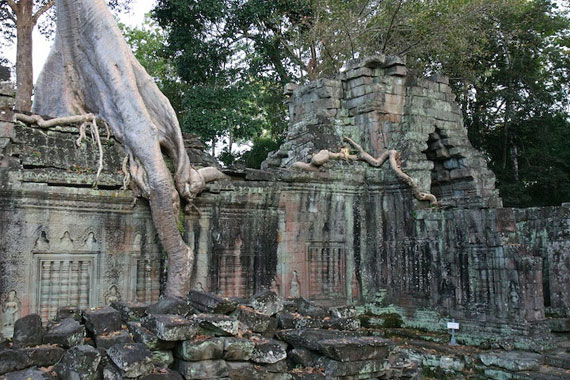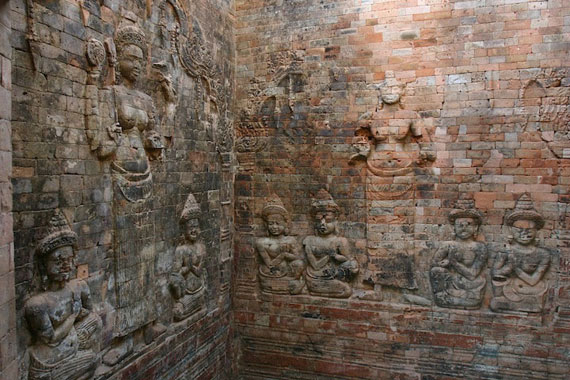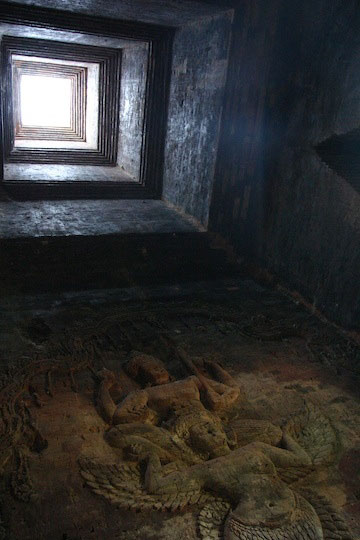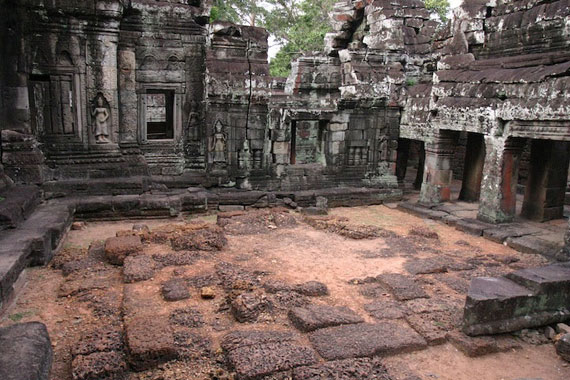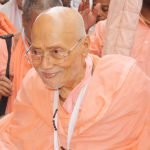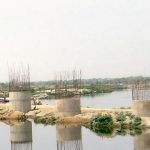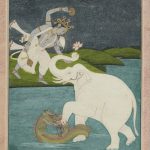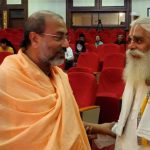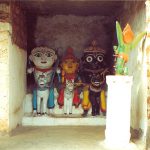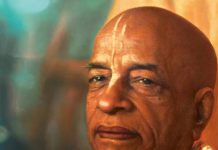Situated between India and China, Southeast Asia has been the birthplace of several cultures, some of which rank among the world’s greatest civilizations. Among the Indianized kingdoms which sprang up in Southeast Asia before the Common era, is the great Khmer civilization and its capital, Angkor, in modern day Cambodia. The advent of Indians in Southeast Asia has hardly a parallel in history. In view of the ethnic affinities between the prehistoric races of India and those of Suvarnabhumi, contact between the two regions may well go back to the remotest antiquity. Most of the countries of Southeast Asia came under the cultural and religious influence of India. This region was broadly referred to by ancient Indians as Suvarnabhumi (the Land of Gold) or Suvarnadvipa (the Island of Gold). Vedic Indians must have charted Java, Yawadvip, thousands of years ago because Yawadvip is mentioned in India's earliest epic, the Ramayana. The Ramayana reveals some knowledge of the eastern regions beyond seas; for instance Sugriva dispatched his men to Yavadvipa, the island of Java, in search of Sita.
Southeast Asia was often called by many British, French and Indian scholars as Farther India, Greater India, L’Inde Exterieure, and the Hinduized or Indianized States. The various states established in this region can therefore be called Indianized kingdoms. Invasion nor proselystism was by no means the main factor in the process of Indianization which took place in the Indian Archipelago. International trade was very important. Angkor Wat indeed deserves to play the leading part not only because of its exceptional artistic and architectural achievements but also on account of the hydrological, agricultural and ecological problems solved there.
Angkor is located at the foot of Mount Kulen, a large natural water-tower from where many rivers flow down. But water was an irregular resource and the surplus had to be stored for use in the dry season. The Angkorian kings understood this and chose to build barays. These were large artificial reservoirs supplied by rainfall and diverted rivers. They were well thought out: instead of digging into the ground, people raised dykes to hold water. Water would enter through the north dyke and would later be released to irrigate rice fields. The amazing scale of such a construction, and the amount of labor (about 10,000 man-years) necessary to dig and pile up the reservoir walls, can hardly be put into adequate words.
Angkor Wat is often hailed as one of the most extraordinary architectural creations ever built, with its intricate bas-reliefs, strange acoustics and magnificent soaring towers. Angkor Wat, originally named Vrah Vishnulok – the sacred abode of Lord Vishnu, is the largest temple in the world. It was built by King Suryavarman II in the 12th century. The Sanskrit Nagara (capital) was modified by the Cambodian tongue to Nokor and then to Angkor. The word Angkor is derived from the Sanskrit word 'nagara' meaning 'holy city'. Vatika is Sanskrit word for temple. "The city which is a temple," Angkor Wat is a majestic monument, the world's largest religious construction in stone, and an architectural masterpiece. The Khmers adhered to the Indian belief that a temple must be built according to a mathematical system in order for it to function in harmony with the universe. Distances between certain architectural elements of the temple reflect numbers related to Indian mythology and cosmology. The sheer size of the place leaves visitors in awe.
{mospagebreak title=Page 2: Quotes}
"As I walked along the huge, ancient stone of the causeway leading to Angkor Wat, I was forced to look inward and question my own significance in the universe. Everything here, from the huge moat protecting the complex to the giant nagas flanking my path, is designed to make one shrink before the majesty of Vishnu. After passing through a succession of courtyards, each grander and more elaborate than the last, I arrived at an enormous Meru with its five soaring peaks and exquisitely carved walls. What a spectacle this all must have been long ago….Angkor Wat is the representation of the Khmer (Hindu) universe, reflecting a relationship to nature on such a deep level, that it makes modern architecture seem spiritually empty. The soul of the Khmer is alive in these temples and mirrored in the faces of today's Cambodians, the recipients of a rich artistic and spiritual heritage."
Jon Ortner, author of Sacred Places of Asia: Where Every Breath Is A Prayer
"At the sight of this temple, one feels one's spirit crushed, one's imagination surpassed. One looks, one admires, and, seized with respect, one is silent. For where are the words to praise a work of art that may not have its equal anywhere on the globe? … What genius this Michalangelo of the East had, that he was capable of concaving such a work."
"It is grander than anything left to us by Greece or Rome."
“this architectural work perhaps has not, and perhaps never has had, its equal on the face of the globe.”
Henry Mouhot (1826 -1861), a French naturalist and explorer
"Perhaps no where else in the world, has such an imposing mass of stone been arranged with more sense of art and science…a spark of sheer genius….what grandeur and at the same time what unity…"
"The Khmer took everything from India, from irrigation to astronomy and including Shiva and the rest of Hindu religion…And the Khmer built Angkor. "
"The Khmer civilization was the most important, the most brilliant and original in ancient Indo-China. The brilliant achievements of ancient Cambodia were due primarily to the country’s wealth of natural resources. No other country of the peninsula could boast of such an unbroken extent of fertile and well-watered. Cambodia, being a strictly defined and admirably situated geographical unit, was the cradle of a powerful and gifted race."
"But neither favorable environment nor limitless resources nor years of peace would have sufficed without the spiritual contribution of India."
"India was the spark that fired the blaze."
Bernard Philippe Groslier (1926 -1986), a French conservator and archaeologist
"I've seen the Pyramids in Egypt, the Parthenon in Athens, the Great Wall of China, and the Rome Colleseum, but I think the Temples of Angkor Wat beat them all. "Think of the world in the 8th to 15th century, when they were burning witches in Britain, and Australia and America hadn't been discovered."
Ken Chamberlain
Source: www.hinduwisdom.info
{mospagebreak title=Page 3: Photos}


